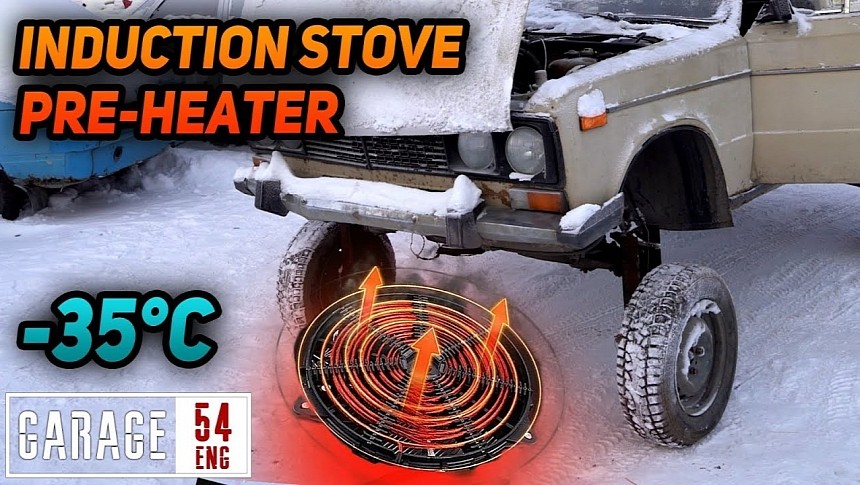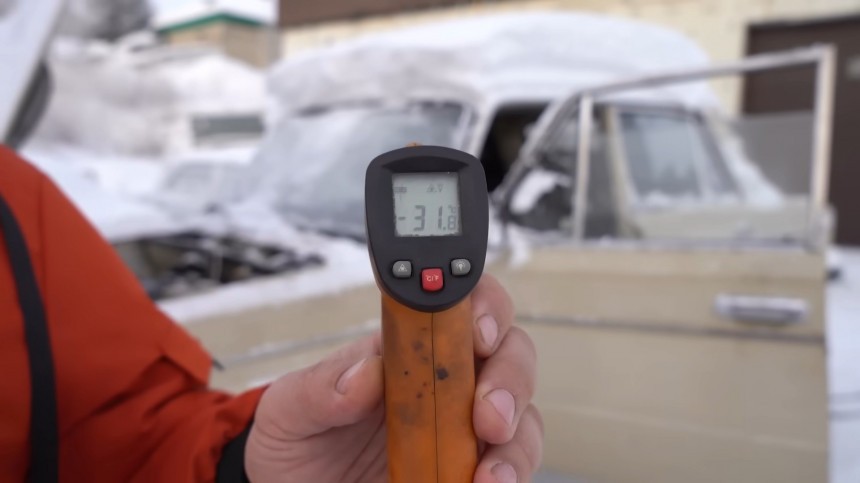It’s winter in Siberia – what a shocker! – but unlike in other parts of the world, global warming doesn’t seem to have a valid visa for Russia, and the temperatures have dropped abruptly in the city of Novosibirsk. Why that place, of all the urban conglomerates on the world map? Because that’s where certain piston addicts fit an induction heater to a car’s oil pan to make it run at minus 35°F (negative 32°C).
Believe it when I say the weather outside is frightful if you live in Siberia in the winter, and the boys from Garage 54 will testify to this. In Siberia, winter is harsh and merciless, and it takes proper preparations to keep a car going in bone-chilling temperatures that would make a freezer sneeze and wear mittens.
The biggest threat to an internal combustion engine during winter is the motor fluids’ tendency to solidify at extremely low temperatures. Sure, there are special fuels, coolants, and lubricants produced specifically for arctic regions, and they work great, but they’re also expensive. In Siberia, there are options for keeping the car in a climate-controlled environment where the temperature doesn’t drop catastrophically during the cold season.
Another would be to keep the engine running all the time – in some areas of Siberia, this is standard practice (when temperatures fall below minus 90°F/negative 68°C, you don’t want the engine to seize - it won't turn back on just on it's own). However, the most widespread method is to preheat the engine using an external source – anything from open fire to electric heaters will do the job fine.
Since the engine’s underbelly is usually made of magnetic metals (like steel and cast iron), the possibility of adding another type of heat-transferring mechanism arises from electromagnetic induction. Now, we are very familiar with induction stoves and hobs and their wonderfully efficient operation. Anyone who’s ever used one can attest that it heats pots and pans extremely quickly – but will it do the same with engine oil while it’s still inside the pan under the crankshaft?
Well, the Russian truth-seeking cloggers from Garage 54 aren’t the type of mechanics that sit with their arms crossed. They took apart a portable induction hob, removed its copper coil and control panel, and fitted it to the underside of a Lada. As we can plainly see from the video below, the idea works flawlessly, and it isn’t long before the engine oil turns from a thick jelly into a runny lubricant.
But simply liquefying the oil in the pan isn’t enough to get the car going – the extreme cold doesn’t give in that easily. Induction heating works great within a very restricted area – namely, only the metal directly above the coil will heat up as a result of the electromagnetic effect. Getting the engine to turn takes some time – depending on the size and power of the inducting element. The point is that it works, provided a reliable power supply is nearby.
The biggest threat to an internal combustion engine during winter is the motor fluids’ tendency to solidify at extremely low temperatures. Sure, there are special fuels, coolants, and lubricants produced specifically for arctic regions, and they work great, but they’re also expensive. In Siberia, there are options for keeping the car in a climate-controlled environment where the temperature doesn’t drop catastrophically during the cold season.
Another would be to keep the engine running all the time – in some areas of Siberia, this is standard practice (when temperatures fall below minus 90°F/negative 68°C, you don’t want the engine to seize - it won't turn back on just on it's own). However, the most widespread method is to preheat the engine using an external source – anything from open fire to electric heaters will do the job fine.
Well, the Russian truth-seeking cloggers from Garage 54 aren’t the type of mechanics that sit with their arms crossed. They took apart a portable induction hob, removed its copper coil and control panel, and fitted it to the underside of a Lada. As we can plainly see from the video below, the idea works flawlessly, and it isn’t long before the engine oil turns from a thick jelly into a runny lubricant.
But simply liquefying the oil in the pan isn’t enough to get the car going – the extreme cold doesn’t give in that easily. Induction heating works great within a very restricted area – namely, only the metal directly above the coil will heat up as a result of the electromagnetic effect. Getting the engine to turn takes some time – depending on the size and power of the inducting element. The point is that it works, provided a reliable power supply is nearby.











































